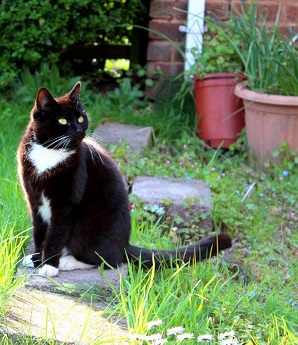How To Take Care Of Your Cats During Spring

After the long, dark days of winter, the warm evenings and brightly coloured flowers of spring often can’t come quickly enough – and we’re not the only ones who look forward to this time of year.
Spring also means our cats can get outside, bask in the sun and explore our gardens and beyond.
However, with the sun and the flowers comes a few extra risks for your cat. Petplan takes a look at some of the additional issues your cat may face during the spring months…
Poisonous plants and flowers are in bloom
As we mentioned in a previous blog post - keeping your cat safe in your garden, certain flowers, shrubs, wild plants and mushrooms can be extremely dangerous for your cat.
Species of poisonous plants that are common during the springtime include:
- Lilies
- Daffodils
- Azaleas
While it’s impossible to know where your cat is at all times, ensuring your garden is free from these plants will limit their exposure to potentially harmful flora.
Beware too of snail and slug pellets, as they have a toxic compound in the pellet that can cause poisoning.
If you do happen to notice any signs of poisoning – such as vomiting, drooling, diarrhea, disorientation or even collapsing – then contact your vet immediately.
Cats can suffer from allergies too
Just like people, cats can also develop allergies to plants, grass, pollens and other substances during springtime – and the symptoms can often be very similar to people. These include:
- Itchy skin
- Ear problems
- Hair loss
- Inflamed skin
- Respiratory issues (allergies can also aggravate your cat’s asthma if they suffer from it)
- Runny eyes
- Change in behaviour
If you notice these symptoms then take your cat for a check-up with your vet.
Fleas and ticks are more common in warmer weather
Along with sunshine, spring brings about many pesky little creatures. Thankfully, there are some simple steps you can take to limit the chances of your pet getting fleas and ticks:
- Treat your pet with anti-flea & tick products. There are many products on the market and many sold within pet shops are ineffective, so it’s best to check with your vet who can advise on the best treatment
- Ensure all soft furnishings are cleaned, the house is vacuumed regularly and use a household flea spray
- If you have a dog as well, you may use Permethrin as a flea treatment. However, do not use this on cats as it’s highly toxic to them and can be fatal. If you accidentally apply this to your cat or if the cat has come into close contact with a treated dog, bath the cat in lukewarm water with a mild detergent and contact your vet immediately.
Sometimes, even with all the care in the world, your cat may still get fleas. Symptoms include:
- Scratching
- Dark specs in their fur
- Bites on your own skin
- Hair loss especially around the back/tail area
You can regularly check your cat for fleas by combing them with a fine tooth comb over a white sheet. If there are many dark specs these are highly likely to be flea droppings.
Things to be wary of at Easter time
Easter is often a fun family time, with weekend’s consisting of Easter egg hunts and hot cross buns.
But have you ever considered how for cats, eating the leftover chocolate on the grass can be dangerous? Chocolate poisoning causes lots of pet emergencies every year, especially around Easter time.
Chocolate contains a compound called theobromine which can be deadly to cats (and dogs) because unlike us, they can’t metabolise theobromine effectively. Different types of chocolate has varying levels of theobromine, with dark chocolate containing more than milk chocolate.
The most common symptoms of chocolate poisoning include vomiting, diarrhoea, urinating more, an irregular heartbeat, tremors and fitting. A large dose of chocolate can induce a coma or death. Symptoms can occur within a few hours up to a day after ingestion. Contact your vet immediately if you think your cat has ingested chocolate.
Another factor to consider are cats and insects. Cats often enjoy chasing after wasps and bees, and in the process can be stung.
In most cases these are not emergencies, however, if your cat is stung near the mouth or neck, then you may need to contact your vet. Cats, like humans, can be allergic to stings. If this is the case, you may notice swellings, distress and breathing difficulties.
If the sting is not too serious, you can treat it yourself.
With a bee sting, remove the sting if it’s still in place and clean the area with a little bicarbonate of soda. For a wasp sting, gently clean the area with lemon juice or malt vinegar.
As with all pets, it’s vital you have the right insurance to help ensure your pet has access to the best care possible. Visit Petplan’s cat insurance page to see which policy is right for your cat.
Do you have any other advice on springtime dangers for cats? Let us know in a comment below…

